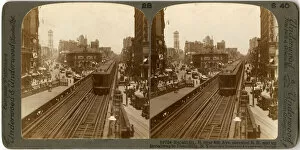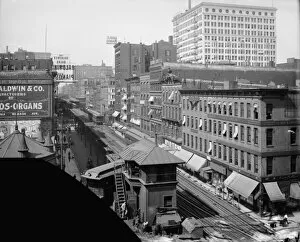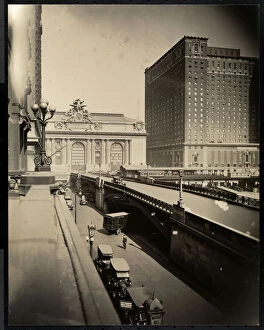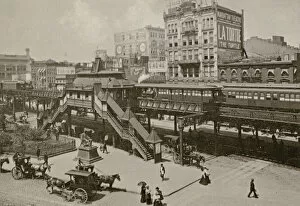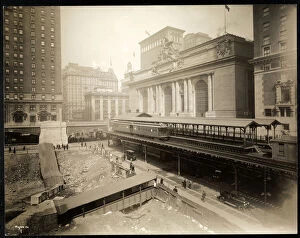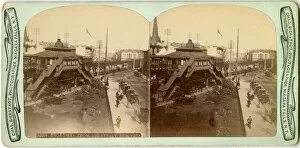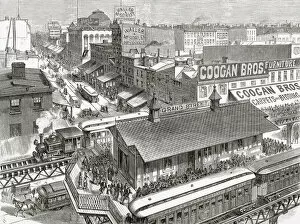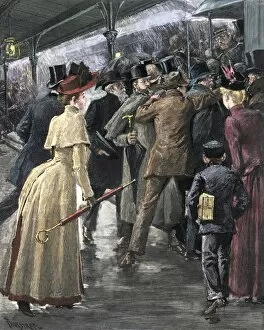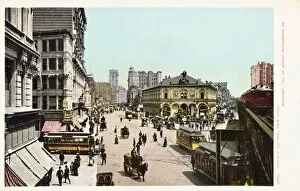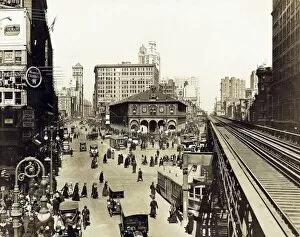Elevated Railroad Collection
"Tracing the Evolution of Elevated Railroads: A Glimpse into Urban Transportation History" Step back in time to the 1890s as we witness the bustling Herald Square
For sale as Licensed Images
Choose your image, Select your licence and Download the media
"Tracing the Evolution of Elevated Railroads: A Glimpse into Urban Transportation History" Step back in time to the 1890s as we witness the bustling Herald Square, where the elevated railroad reigns supreme. This stereograph photo captures the iconic Sixth Avenue Elevated Railroad stretching northwards over Broadway towards the majestic Times Building, a testament to progress and connectivity. Fast forward to early 1900s Chicago, and we find ourselves on Wabash Avenue, gazing at an awe-inspiring black and white photograph of an elevated railroad. The city's heartbeat pulses through this image, showcasing how urban landscapes adapted to accommodate rapid transportation needs. In 1920, Park Avenue and 42nd Street come alive in a silver gelatin print. Towering buildings frame this view as an elevated railroad gracefully traverses above ground level. It serves as a reminder that even amidst modernization, historical elements continue to shape our cities. Transport yourself back to Greeley Square in New York City circa 1898 with a litho capturing Broadway intersecting with 34th Street. Here lies evidence of progress intertwining with tradition; an elevated railroad stands tall against timeless architecture. Witness another chapter unfold at the excavation site located at 42nd Street and Park Avenue around 1920. Through another silver gelatin print, we catch a glimpse of construction efforts shaping future transportation systems while preserving remnants of history. The opening ceremony for Siegel Cooper Co. 's Sixth Ave store unfolds before our eyes from a vantage point on South 19th Street looking southward during the late nineteenth century or early twentieth century period. An elevated railroad looms overhead - symbolizing commerce's reliance on efficient transit networks. Travel further back in time between1860-1880 along Broadway from33rd street via stereograph photo; here lies evidence that even then people relied on innovative solutions like elevated railroads for seamless mobility within expanding cities.

